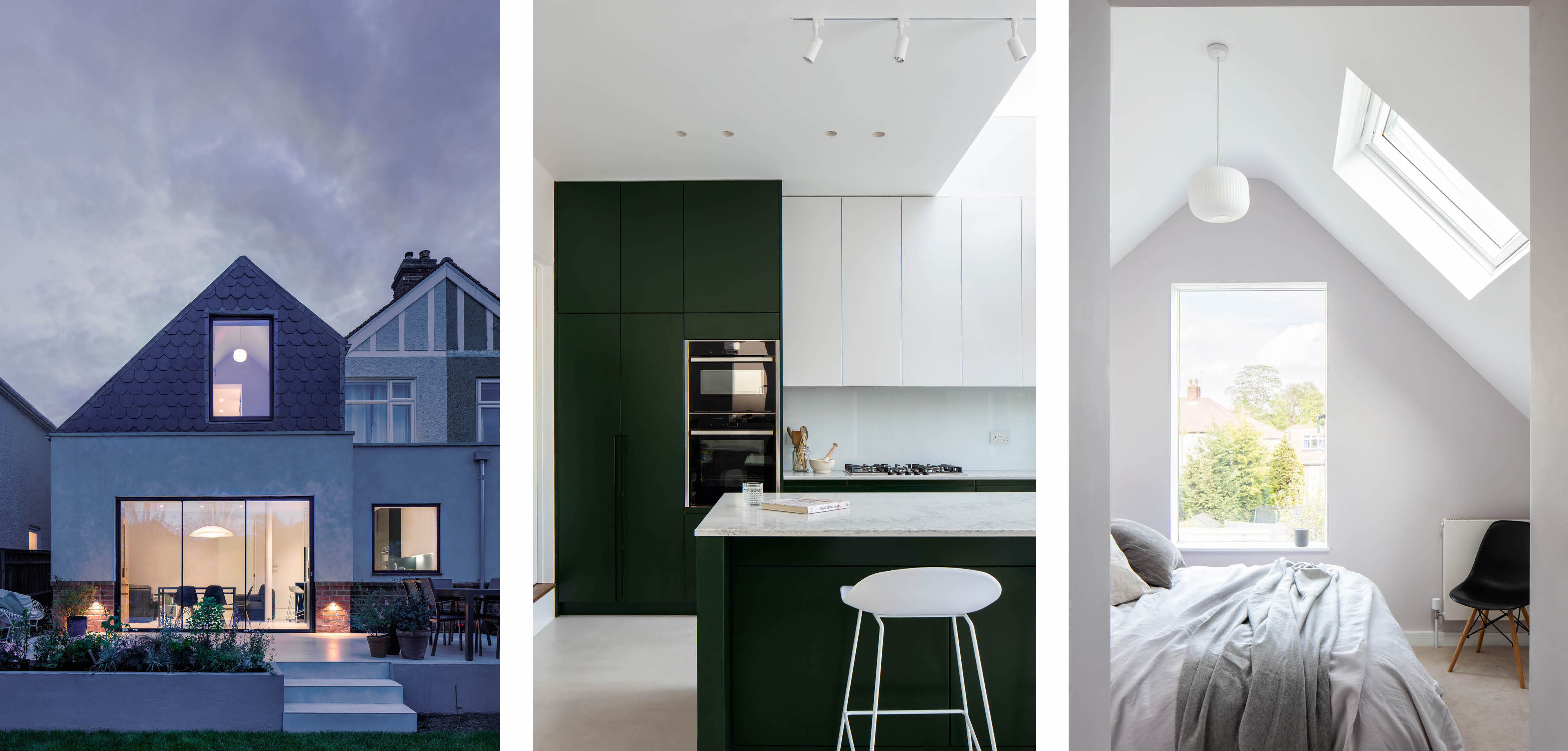Featured image by Oliver, architect on Design for Me. See his profile here to shortlist him for your project.
If you’re looking for an architect’s services for an extension, home building or renovation project you have definitely come to the right website. As a residential architect myself, I created Design for Me to help homeowners find just the right architect or architectural designer for their project. It’s free to use and we’re on hand to help if you have any questions along the way. It’s probably the most important choice you can make during your building or extension project, so it’s important to get it right.
But before you post your job to see which architects are interested in your area, it’s helpful to understand a little bit about what you can expect from them:
- What’s the role of an architect?
- What are architect’s services typically?
- How do architects charge for their services?
- How much does an architect charge for a planning application?
- What can I expect during the initial consultation with an architect?
- Is the initial meeting with an architect free?
What’s the role of an architect?
In the context of a residential project for a homeowner, the architect’s role is to work with you to design, plan and deliver your project to meet your requirements and budget. Commonly, this also means helping you define what your brief and budget are in the first instance.
What are architect’s services typically?
Let’s use an example of a £60K house extension. An architect would usually be employed to do the following work, which falls roughly into three phases and is usually split up (as is their fee) like this:

Phase 1: Outline design (including planning application)
- Discuss and then develop the brief with the homeowner. This makes sure targets are realistic and everyone’s expectations align.
- Produce a simple feasibility study. This will include what they foresee in terms of hurdles in the project. They will then make suggestions to gather further information or meet statutory obligations, e.g. you might need a Party Wall Award; a drainage or soil survey; structural appraisal; or they might recommend pre-planning advice from the local authority.
- Produce ‘existing’ drawings. For house extensions and renovations it’s common for the architect to carry out the measured survey and produce the existing drawings. This is often more cost effective than hiring a separate survey company, although for larger or complicated projects the architect might request this.
- Produce a concept design. This usually starts with sketches for further discussion with you / seeking your approval.
- Prepare drawings and documents for the planning application and make the submission to your local council.
The architect’s services might stop at this point. You would then instead work directly with a builder (contractor) to develop the design and specify materials, finishes and fittings. However, in the case of our 60k rear extension, most homeowners decide to take the ‘traditional’ route and continue with their architect. Find out more about the ‘design and build’ route in this article.
Phase 2: Detailed design and ‘tender’ (getting quotes and choosing builder)
- Your architect then prepares drawings and a specification for construction. Around this point they would also submit plans to building control (or advise you on alternative routes to obtaining building control approval).
- All drawings and specifications are then bundled up and given to your chosen builders for their quotations and timescales.
- If a builder’s quote is acceptable, you will sign a contract and building work can start. See our article: Do I need a contract with my builder?
This is the next stage that the architect’s services might cease. The hefty design work element is over now so this next phase represents a smaller proportion of their overall fee. However, it can really pay off having your architect continue to be involved during construction even for a small house extension, especially if you’ve never done a building project before.
Phase 3: Construction phase
- The architect will administer the contract with the builder. They will make site visits at certain important stages in the build to check work is done on time and in line with the drawings/specification.
- The architect will deal with any queries from the contractor. Also, if you change your mind on any elements of the design, your architect will manage this process and make cost/time adjustments with the contractor for your approval.
- Once certain phases are completed to their satisfaction, your architect will issue a certificate prompting you to pay a portion of the build cost to the builder.
- At the end of the job they will also check that all work is satisfactory and issue a ‘practical completion’ certificate. 95% of the total sum (typically) will be paid to the builder.
- Following this a six month ‘rectification’ period begins where the architect can instruct the builder to come back to fix any relevant outstanding issues. The final certificate is issued after this and the balance is paid.
How do architects charge for their services?
Let’s take the example of our £60k extension again. For private residential projects like this, architects will usually charge a flat fee.
The architect will look at all the aspects of the project and calculate how much of their time will be needed and come back to you with their fee. As a very rough guideline, architect’s fees for a private house project could be anywhere in the region of 5-15% of the overall project budget. The following figures are taken from independent annual fee survey carried out by the Fees Bureau, showing average fees relative to the whole project budget

So for a £60K extension this would be around 10% = £6,000 in architects’ fees for ‘full services’.
How much does an architect charge for a planning application?
If you decide that you only require the architect up to the planning phase, their fee would be roughly 40% (see pie chart above) of the £6,000. So planning drawings would be £2,400 in architects’ fees.
What can I expect during the initial consultation with an architect?
We recommend that you meet the designer in person at the address of the project. They can give you their initial thoughts and advice. This should give you a better understanding of what you want but also what may be involved (such as a planning application). On Design for Me we recommend that you invite up to three architects for a consultation.
- It’s a chance to see how you get on. It’s important that you and your designer see eye to eye. The better you understand and trust each other the more likely you are to feel satisfied at the end of it. Your project is unique and so are designers, so it’s important that they are the right fit.
- They will explain how they work and charge for services.
- If you like them, you can ask one (or all) of them for a quotation (also commonly called a ‘fee proposal’).If you would like to have a detailed design consultation at your next meeting, you can ask them to provide a quote for this, in addition to their fees for full services.
- For the designers, it is an opportunity to meet you and understand your needs.
- We do not recommend that you pay any fees for design services before you meet and feel confident that they would be suitable. At the very least you should have a detailed conversation on the phone.
Is the initial meeting with an architect free of charge?
In most cases yes. However you should not expect any free design work as part of the meeting. Architects will decide to charge a fee in certain cases (e.g. if they have to travel a long way), but they should let you know beforehand.

